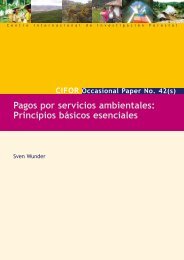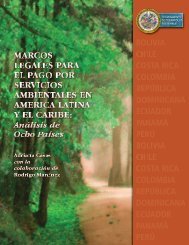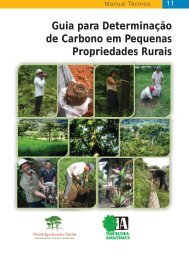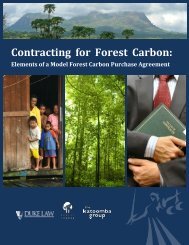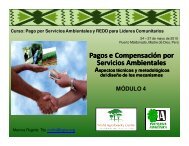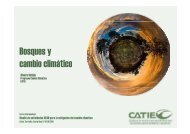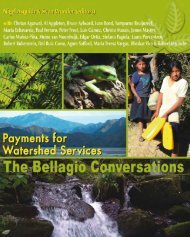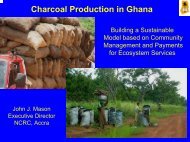Guide on Climate Change and Indigenous Peoples
Guide on Climate Change and Indigenous Peoples
Guide on Climate Change and Indigenous Peoples
- No tags were found...
You also want an ePaper? Increase the reach of your titles
YUMPU automatically turns print PDFs into web optimized ePapers that Google loves.
• C<strong>on</strong>clusi<strong>on</strong>: This case study shows what can be achieved if indigenous peoples,through their representative organizati<strong>on</strong>s, engage activelyin the various nati<strong>on</strong>al <strong>and</strong> global processes related to climatechange <strong>and</strong> REDD+. The indigenous peoples, through AMAN,utilized a combinati<strong>on</strong> of approaches such as the mobilizati<strong>on</strong> ofcommunities, participati<strong>on</strong> in global spaces like the UNPFII; theUNFCCC, the CERD, the FCPF Participants' Committee, <strong>and</strong>UN-REDD Policy Board; <strong>and</strong> the use of internati<strong>on</strong>al instrumentslike the ICERD <strong>and</strong> the UNDRIP. They also used the grievanceprocedures of CERD <strong>and</strong> the IFC. In doing all these, they managedto make their issues more visible, so much so, that the governmentcould not ignore them anymore. Since AMAN does not have much resources, they had to mobilizesupport from others so they can take part in REDD-relatedactivities, both at the local <strong>and</strong> global levels. They are also opento engage in dialogues with the key players in the FCPF, e.g.,d<strong>on</strong>ors, FCPF team, representatives of the Ind<strong>on</strong>esian government.AMAN's legitimacy to speak <strong>on</strong> behalf of indigenous peoples <strong>and</strong>to engage in all these processes cannot be questi<strong>on</strong>ed. The membersof the AMAN Secretariat were c<strong>on</strong>stantly in touch with the leadersto get their feedback <strong>on</strong> the developments. The Secretary Generalof AMAN is <strong>on</strong> top of the REDD issue. The ost recent nati<strong>on</strong>alactivity in Sinar Resi was a political activity to c<strong>on</strong>solidate themembership <strong>and</strong> to agree <strong>on</strong> a strategy to address climate change<strong>and</strong> REDD. This issue of forests <strong>and</strong> indigenous peoples' rights in Ind<strong>on</strong>esiais politically sensitive because the interests being challenged arethose of the most powerful ec<strong>on</strong>omic, political <strong>and</strong> military elite.Undertaking work which challenges the status quo is, therefore,very high risk. This is the reas<strong>on</strong> why AMAN has to be verysystematic <strong>and</strong> sophisticated in how they address the forest issue.In spite of all the dangers they face, they have persisted in theircall for effective participati<strong>on</strong> <strong>and</strong> respect oftheir rights. It isnot realistic to expect that things will change overnight. Whatis clear is that by using the issue of forests - which has becomevery prominent again because of REDD <strong>and</strong> climate change - theindigenous peoples managed to open up more spaces to push forchanges in the forest <strong>and</strong> agrarian legislati<strong>on</strong> <strong>and</strong> the way thegovernment is dealing with indigenous peoples' rights <strong>and</strong> identityissues.88 <str<strong>on</strong>g>Guide</str<strong>on</strong>g> <strong>on</strong> <strong>Climate</strong> <strong>Change</strong> <strong>and</strong> <strong>Indigenous</strong> <strong>Peoples</strong>



